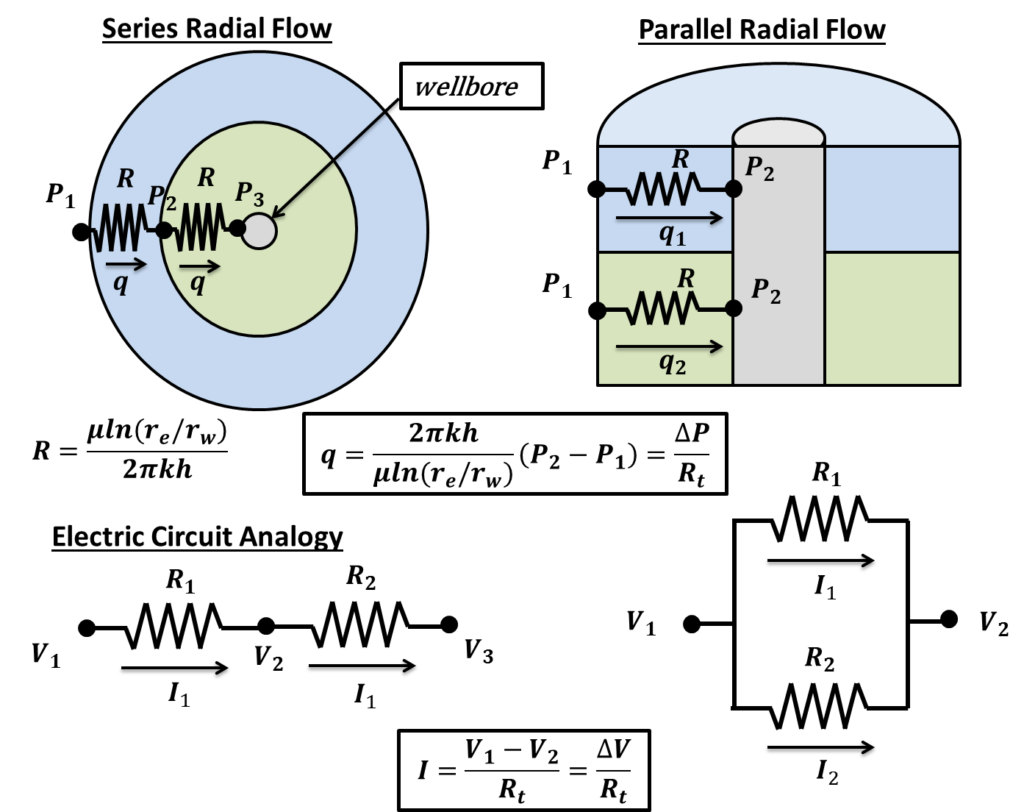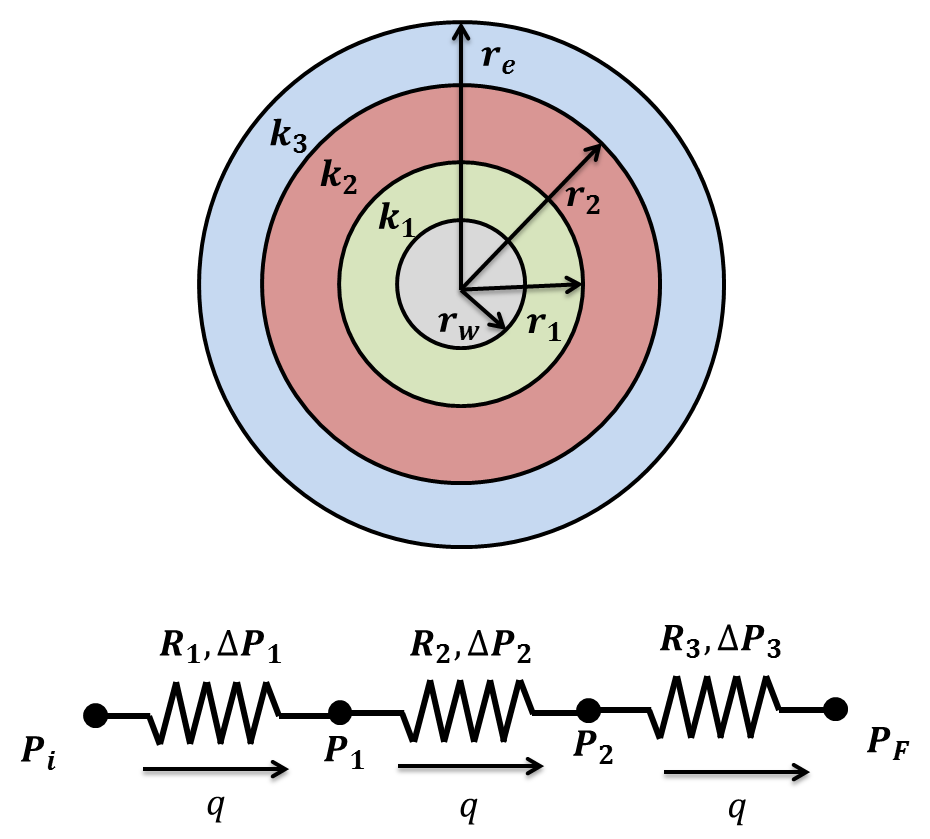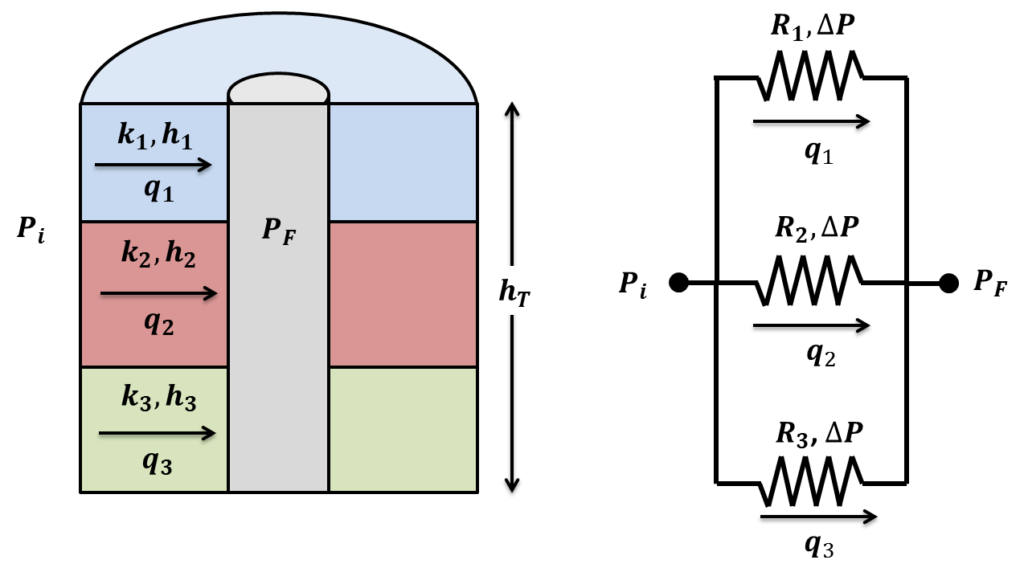
Everything we just applied to linear flow, extends to radial flow. Nothing too different! The same analogy works! The only difference is we apply Darcy’s law for radial flow. We will know work through the derivations of average permeability for series radial flow and parallel radial flow.
Series Radial Flow-Harmonic Average
Consider radial flow for flow units in series as shown in the diagram below:

Recall, that flow going through flow units in series can be treated as resistors in series. Using the same rules we applied in the previous post, we can derive the following expression:
(1) 
Using Darcy’s law for radial flow, the total pressure drop (![]() ) across the entire system is given by the following expression:
) across the entire system is given by the following expression:
(2) 
Using Darcy’s law, the total pressure drop across a flow unit (![]() ) is given by the following expression:
) is given by the following expression:
(3) 
Substituting Equations (2) and (3) into Equation (1) we can develop the following expression:
(4) ![]()
Assuming the height of each flow unit is identical, Equation (4) can be reduced to the following in terms of the average permeability:
(5) 
A more general equation that describes the average permeability of ![]() flow units arranged in series is the following:
flow units arranged in series is the following:
![Rendered by QuickLaTeX.com \[\boxed{k_{avg} = \frac{\ln({\frac{r_e}{r_{w}})}}{\sum_{i=1}^{n}\frac{\ln({\frac{r_i}{r_{i-1}}})}{k_i}}}\]](https://topdogengineer.com/wp-content/ql-cache/quicklatex.com-5789d95c42cedd2c48c0bf92047ab809_l3.png)
Parallel Radial Flow-Weighted Average
Consider radial flow for flow units in parallel as shown in the diagram below:

Recall, that flow going through flow units in parallel can be treated as resistors in parallel. Using the same rules we applied in the previous post, we can derive the following expression:
(6) 
Using Darcy’s law, the total flow rate (q_t) across the entire system is given by the following expression:
(7) 
Using Darcy’s law, the total flow rate across a flow unit (![]() ) is given by the following expression:
) is given by the following expression:
(8) 
Substituting Equations (7) and (8) into Equation (6) we can develop the following expression:
(9) ![]()
Assuming the radius of each flow unit is identical, Equation (9) can be reduced to the following in terms of the average permeability:
(10) 
A more general equation that describes the average permeability of ![]() flow units arranged in parallel is the following:
flow units arranged in parallel is the following:
![Rendered by QuickLaTeX.com \[\boxed{k_{avg} = \frac{\sum_{i=1}^{n}k_{i}h_{i}}{h_T}}\]](https://topdogengineer.com/wp-content/ql-cache/quicklatex.com-887b1371c19cd1571e582e09310fa5e4_l3.png)
**Note: This is the exact same expression for series parallel flow! That makes it easy to remember.